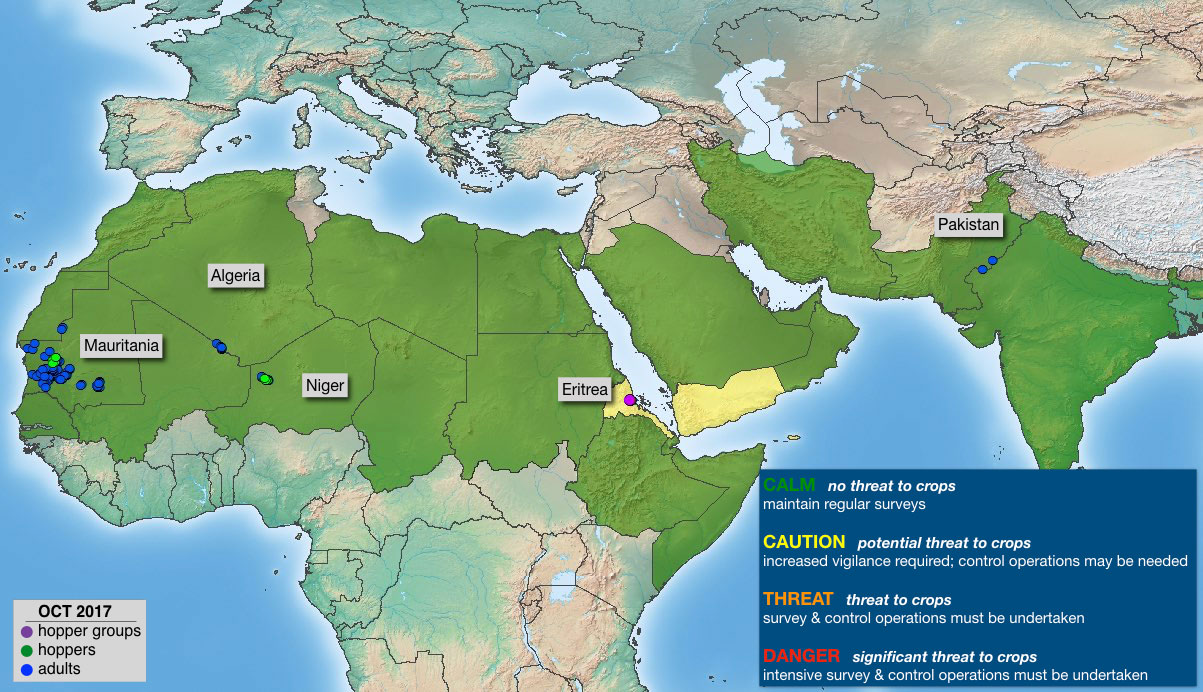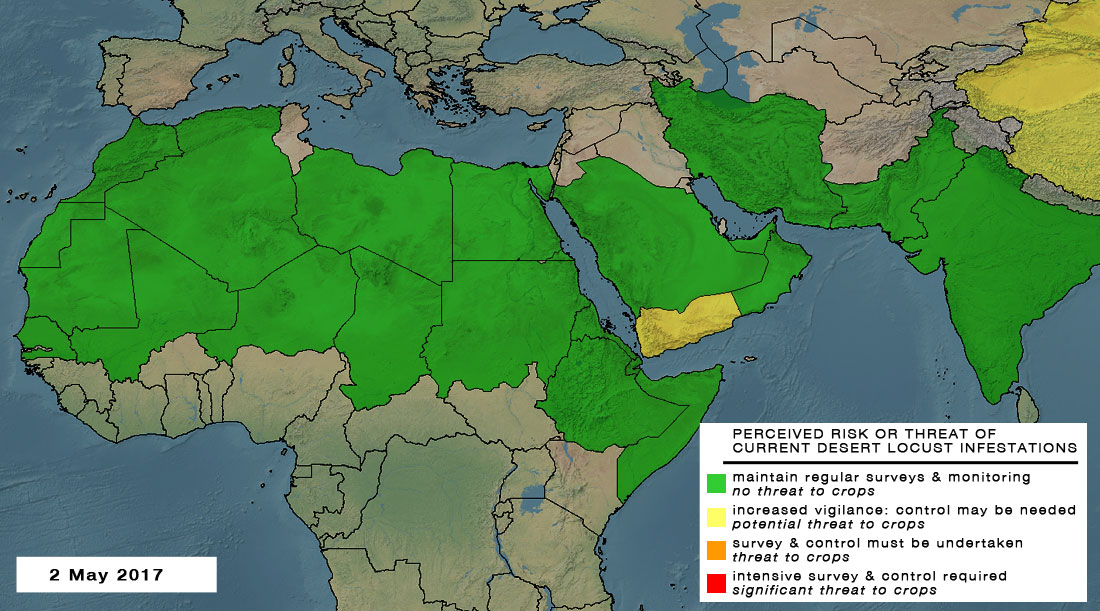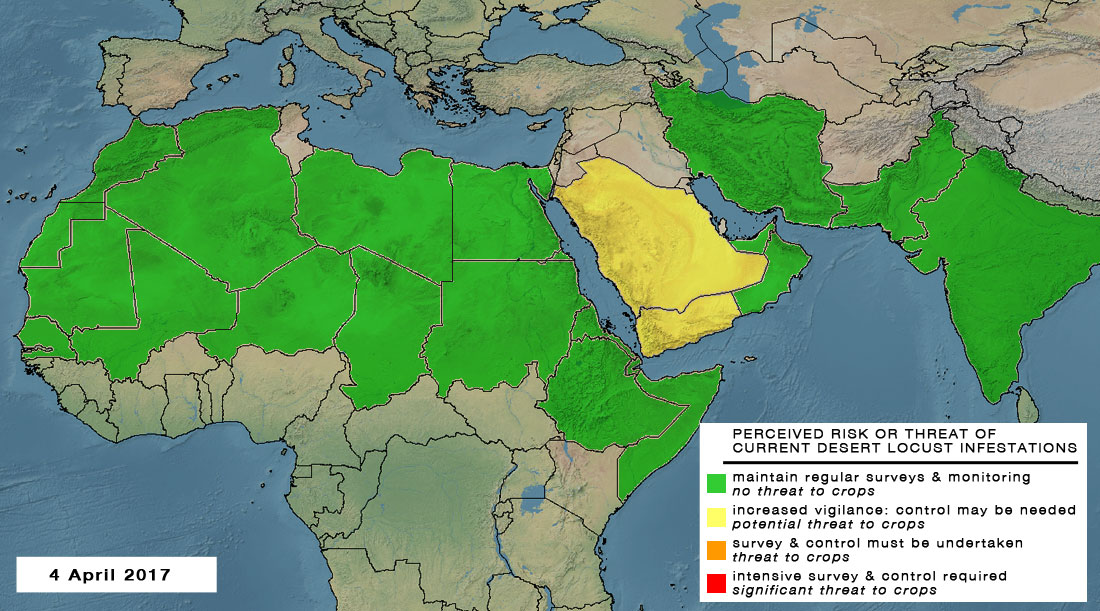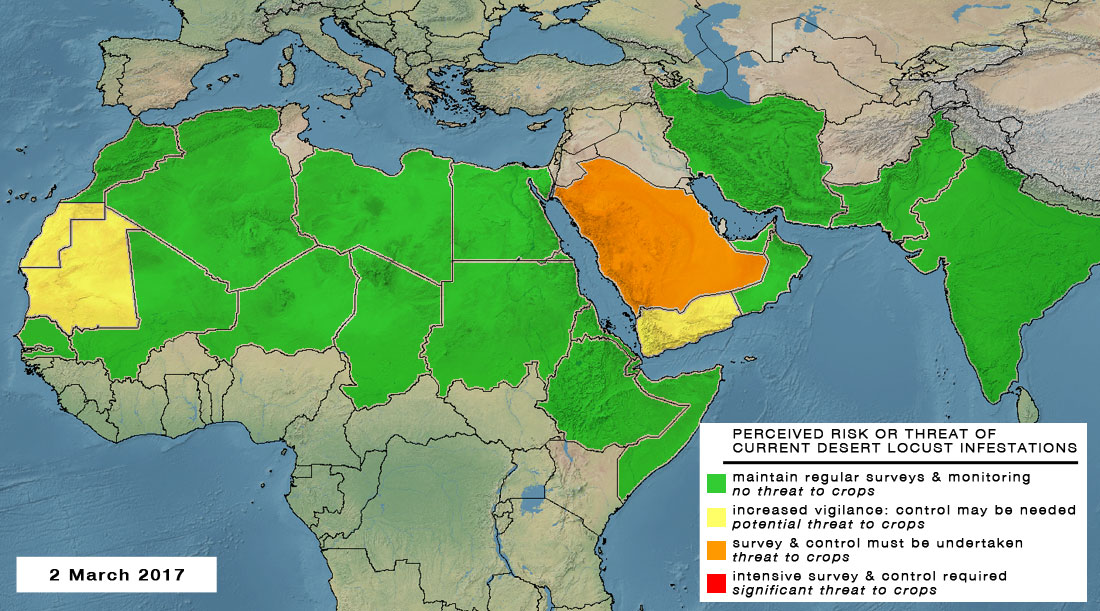3 November. Vigilance required in winter breeding areas of Eritrea and Yemen
Another generation of breeding is expected in Eritrea due to good rains since May. The situation remains unclear in Yemen due to insecurity.

2 May. Risk and threat to crop declines
Despite a reduced threat, vigilance should be maintained in spring breeding areas of Arabia because of recent rains and the continuing impact of insecurity on locust monitoring in Yemen.

4 April. Vigilance should be maintained in spring breeding areas of Arabia
A slightly higher than normal level of vigilance should be maintained in Saudi Arabia and Yemen because of previous infestations on the Red Sea coast, recent good rains in the interior where there is potential for spring breeding, and the continued uncertain situation in Yemen.

2 March. Risk and threat to crops decline as Desert Locust situation improves
Control operations and drying conditions have helped to mitigate Desert Locust threat to agriculture.





